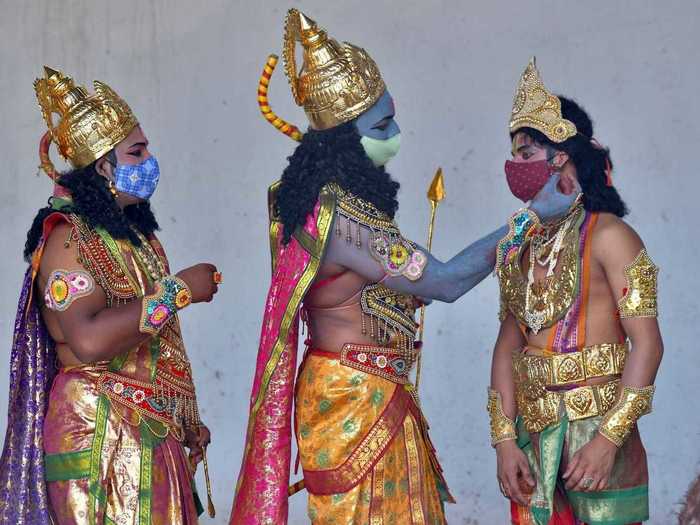
Relatives attend the funeral of a man who died from the coronavirus disease at a crematorium in New Delhi, India, on April 21, 2021.Adnan Abidi/Reuters


K Srinath Reddy, the president of the Public Health Foundation of India, told the Financial Times: "Health systems weren't better prepared for it this time around. Many people in the administration across the country did not expect that there would be a 'this time around.'"
"It was somehow presumed that we had passed the pandemic," he added.

Since the start of the pandemic, the country has recorded more than 16 million cases and 186,000 deaths, according to a tracker by Johns Hopkins University.
This means it has now overtaken Brazil, with the second-highest number of confirmed cases worldwide. The first remains the US.

Source: Scroll India, Insider

One in three people in Delhi is testing positive, according to BBC News.


Source: BBC News

Source: Sky News
—BBC News (World) (@BBCWorld) April 22, 2021

Source: Insider

Desperate relatives stole the cylinders from a storeroom at Damoh district hospital in Madhya Pradesh, a large state in central India.
One doctor complained to India Today: "Under such circumstances, it is becoming increasingly difficult for doctors and paramedic staff to perform their duties."
Source: Insider, India Today

Source: Insider

"No one in Delhi would have ever witnessed such a scene. Children who were 5 years old, 15 years old, 25 years old are being cremated. Newlyweds are being cremated. It's difficult to watch," Jitender Singh Shunty, who runs a makeshift crematorium, told Reuters.
Source: Reuters

One Delhi resident, Nitish Kumar, told Reuters this week that he was forced to keep his dead mother's body at home for nearly two days because he couldn't find any space for her in the city's crematoriums.
He ended up cremating her in a parking lot adjoining a crematorium.
Source: Reuters

Source: Al Jazeera


Source: France24

Source: Reuters


Source: Financial Times


Source: Bloomberg

More than 130 cases of B.1.617 have so far been detected in Britain, according to Sky News.
Source: Sky News
 I spent $2,000 for 7 nights in a 179-square-foot room on one of the world's largest cruise ships. Take a look inside my cabin.
I spent $2,000 for 7 nights in a 179-square-foot room on one of the world's largest cruise ships. Take a look inside my cabin. Saudi Arabia wants China to help fund its struggling $500 billion Neom megaproject. Investors may not be too excited.
Saudi Arabia wants China to help fund its struggling $500 billion Neom megaproject. Investors may not be too excited. One of the world's only 5-star airlines seems to be considering asking business-class passengers to bring their own cutlery
One of the world's only 5-star airlines seems to be considering asking business-class passengers to bring their own cutlery From terrace to table: 8 Edible plants you can grow in your home
From terrace to table: 8 Edible plants you can grow in your home
 India fourth largest military spender globally in 2023: SIPRI report
India fourth largest military spender globally in 2023: SIPRI report
 New study forecasts high chance of record-breaking heat and humidity in India in the coming months
New study forecasts high chance of record-breaking heat and humidity in India in the coming months

Copyright © 2024. Times Internet Limited. All rights reserved.For reprint rights. Times Syndication Service.